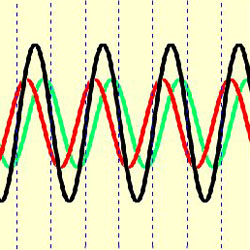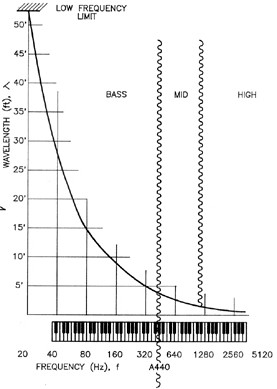
What Causes Standing Waves?
Standing waves are created when the distance between the walls is a multiple of a sound’s wavelength.
Walls that are 20 feet apart, with a wavelength that is 19 feet long, won’t produce the conditions for the wave reinforcement.
However, if the walls are 20 feet apart and the wavelength is 10 feet or 20 feet, then a standing wave will be produced because of the reinforcement.
Standing waves can be caused when waves bounce between;
• Opposite walls
• Four sides of the room
• All six sides of the room (given most rooms have four walls, a floor, and a ceiling!)
What Can I Do When I Hear a Standing Wave?
The solution to stopping a standing wave is cutting the offending frequency of the related instrument.
In the case of a digital mixing board which allows for surgical precision, cut a very narrow amount of the offending frequency.
When I experienced this recently, I was running an analog mixer so I used the house EQ in the rack to cut the low end in the 80 Hz range. This way, I could still use my channel EQ to get the right “tom” sound.
Summary
Low end sounds create standing waves when the reflected sound between walls is directly opposite in phase. By cutting the frequency, you can eliminate the problem.
What’s the oddest instance if this you’ve ever heard? Let me know in the comments below!
Ready to learn and laugh? Chris Huff writes about the world of church audio at Behind The Mixer. He covers everything from audio fundamentals to dealing with musicians. He can even tell you the signs the sound guy is having a mental breakdown.

